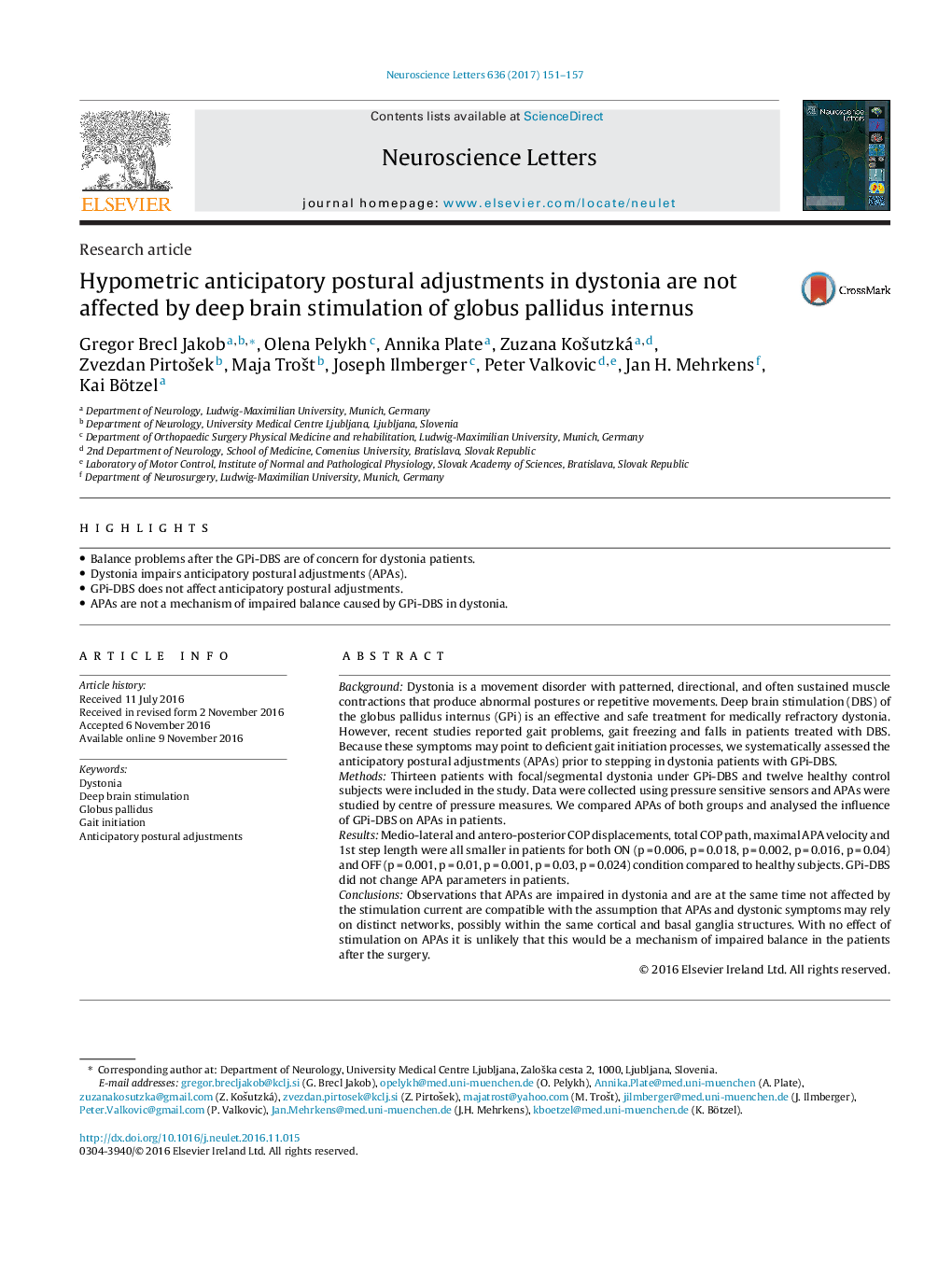| Article ID | Journal | Published Year | Pages | File Type |
|---|---|---|---|---|
| 5738733 | Neuroscience Letters | 2017 | 7 Pages |
â¢Balance problems after the GPi-DBS are of concern for dystonia patients.â¢Dystonia impairs anticipatory postural adjustments (APAs).â¢GPi-DBS does not affect anticipatory postural adjustments.â¢APAs are not a mechanism of impaired balance caused by GPi-DBS in dystonia.
BackgroundDystonia is a movement disorder with patterned, directional, and often sustained muscle contractions that produce abnormal postures or repetitive movements. Deep brain stimulation (DBS) of the globus pallidus internus (GPi) is an effective and safe treatment for medically refractory dystonia. However, recent studies reported gait problems, gait freezing and falls in patients treated with DBS. Because these symptoms may point to deficient gait initiation processes, we systematically assessed the anticipatory postural adjustments (APAs) prior to stepping in dystonia patients with GPi-DBS.MethodsThirteen patients with focal/segmental dystonia under GPi-DBS and twelve healthy control subjects were included in the study. Data were collected using pressure sensitive sensors and APAs were studied by centre of pressure measures. We compared APAs of both groups and analysed the influence of GPi-DBS on APAs in patients.ResultsMedio-lateral and antero-posterior COP displacements, total COP path, maximal APA velocity and 1st step length were all smaller in patients for both ON (p = 0.006, p = 0.018, p = 0.002, p = 0.016, p = 0.04) and OFF (p = 0.001, p = 0.01, p = 0.001, p = 0.03, p = 0.024) condition compared to healthy subjects. GPi-DBS did not change APA parameters in patients.ConclusionsObservations that APAs are impaired in dystonia and are at the same time not affected by the stimulation current are compatible with the assumption that APAs and dystonic symptoms may rely on distinct networks, possibly within the same cortical and basal ganglia structures. With no effect of stimulation on APAs it is unlikely that this would be a mechanism of impaired balance in the patients after the surgery.
